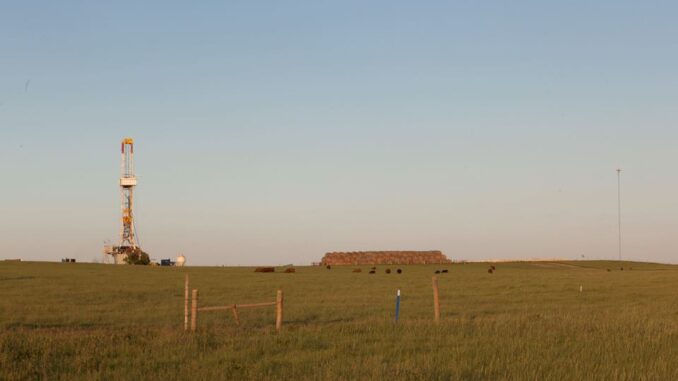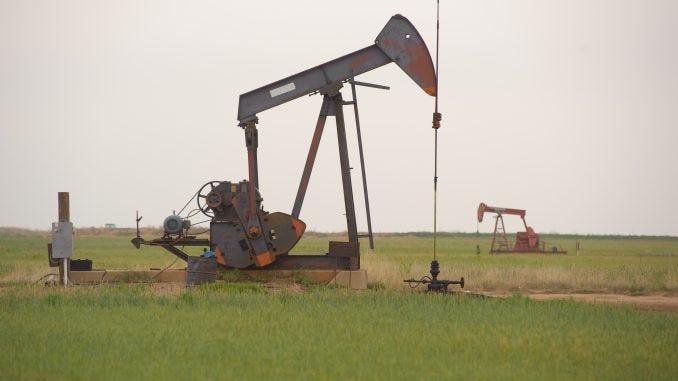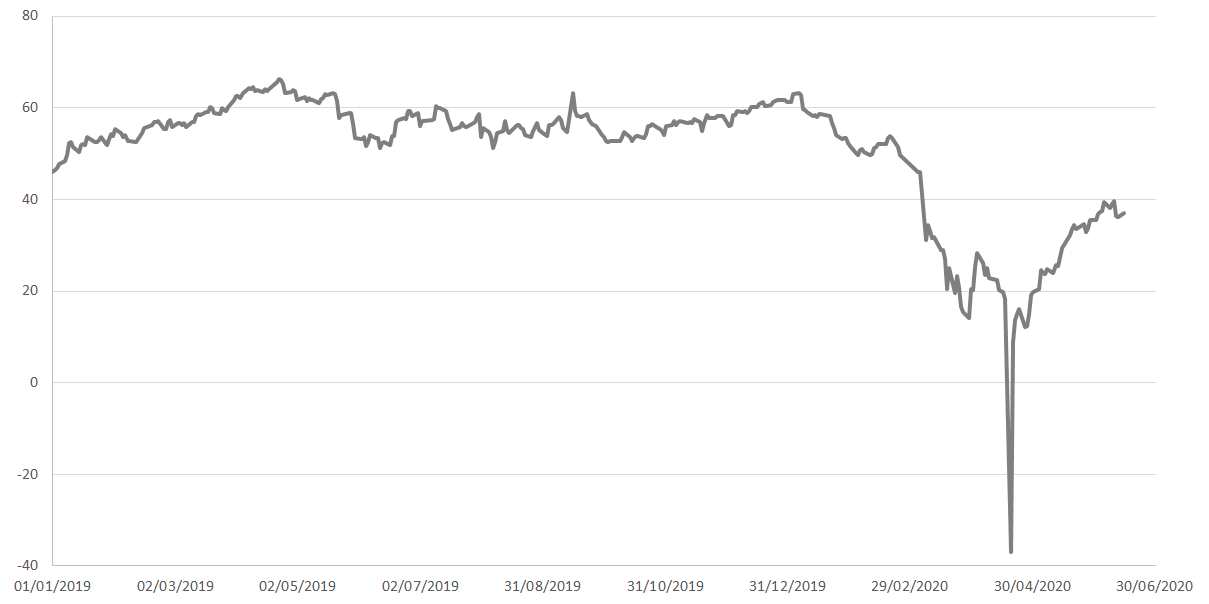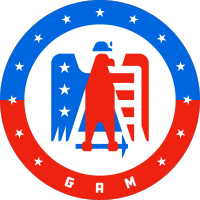
Part Two of Four covering the historical changes, issues, government intervention and solutions to America’s economy. Article originally appeared in ESG University
We had to call an audible on Part Two of Four with this ESG University Classroom Column. Originally we were going to explain how the oil and gas industry has made significant advancements in energy innovations and reclamation, but that story is old news by now.
The purpose of explaining the energy evolution of “precision drilling” was simply to point out that the majority of the shale energy resources are known about. It’s all about the chemistry, science, innovations and price of oil. Knowing where to drill made the “wildcatting” method secondary and shale-fracking preferred.
Certainty over uncertainty.
Now that the government and the oil companies know where to drill, the only thing left for the government to do was to wait for the old-school entrepreneurs and wildcatters to rest on their laurels. And that’s exactly what happened.
In 2014, The Crude Life interviewed former North Dakota Governor and Continental Resources board member Ed Schafer about the Bakken shale play. According to the former board member and governor, the industry has to plan years ahead no matter how smooth or rough the market waves of the future are.
“Oil companies work three to five years out. They’re securing mineral rights, moving rigs, getting capital,” Schafer said in 2014. “They’re planning where they are going to be drilling the wells, not today, not tomorrow, but three years from now, five years from now.”
In 2012 or 2013 is when the Bakken started “transitioning from the frenzy phase to an operational one”, according to Schafer in 2014. He added that during that time, energy companies take the opportunity to slow down and focus on reducing their costs, evaluating operations and concentrating on capital.
Sound familiar? Certainty over uncertainty.
He continued explaining how oil companies use their time during the “downturns”.
“During that operational phase things slow down you start paying more attention to cost, you start pushing down on things you cared about, or didn’t care about before because the activity was so strong,” Schafer said in 2014.
The word “paradigm shift” has been used quite often by industry leaders over the past decade, but especially when talking about the big picture in energy today. Mergers and acquisitions are a major part of a paradigm shift. One of the main reasons the shift is happening at the pace it is, is the access to capital.
According to an Independent Petroleum Association of America member survey from 2014, companies historically funded 42 percent of their own capital spending. That changed dramatically in the 2014-2016 period.
According to the IPAA in 2014 “that energy companies are outspending their cash flow by 50 percent”. Furthermore, the report indicates “borrowed money” is the main driver behind pumping more cash into the shale plays.
“Once you discover a well you put that asset, what you call prove the well, which is an IRS term, but you prove the well and put on your balance sheet and you can borrow against that money,” Schafer said in 2014. “So you borrow against that asset and go drill your next well. So with the independent folks, it is a way to capitalize, a way you raise the funds to be able to explore and produce the oil that is in the ground.”
One of the main reasons the Bakken was getting money was because of the The North Dakota Geological Survey’s Wilson M. Laird Core and Sample Library in Grand Forks, ND. The Laird Library includes up to 65 years worth of geology drilling core samples as well as a private and secure lab space where energy exploration companies can study the vast archives of geology housed in the library.
“Once the mineral rights are secured you have no need to drill for oil in that mineral patch right away so instead of drilling the second, fifth or tenth well on that same pressure field, you may go drill in Montana or Wyoming, “ Schafer said in 2014. “Then 15, 20 years later you come back and drill in North Dakota. So in a capitalistic system you are going to drill where you have the least amount of cost.”
Certainty over uncertainty.

Which brings us to January 2, 2008. The first time oil hit $100. This showed the world it can happen. Then on January 31, 2011, the Brent price hit $100 a barrel briefly for the first time since October 2008, on “concerns that the 2011 Egyptian protests would lead to the closure of the Suez Canal and disrupt oil supplies”. This sent the Bakken into a “frenzy”.
Oil companies were “punching holes in ground and capping them” to prove there was oil, even though the state and oil companies knew it was there.
“Oil companies work three to five years out, they’re securing mineral rights, moving rigs, getting capital. They’re planning where they are going to be punching holes, not today, not tomorrow, but three years from now, five years from now,” Schafer said in 2014. “Let’s be aware of the competitive situation out there and understand that, you know, it’s kinda like shooting ducks. You shoot ahead of them, you don’t shoot at them. You shoot ahead.”
The one thing about hunting is how variables often come into play: Weather, unexpected noises and a sprained ankle, are just a few variables that could change a hunter’s strategy on a moment’s notice. These unforeseen variables create shifts and create the need for audibles and changes to logistical plans. Much like the weather, politics and oil prices, speaking about energy futures can be dicey.
This next part is a very important part of the story. So important, Schafer almost made the comment into more of a warning.
“The reality is the oil companies are going to extract our minerals resources where they can the most efficiently for the least amount of cost.” Schafer said in 2014. “And we need to be aware of that in North Dakota.”
Second is that expectations are now different than historical oil booms due to a change in operations, geological knowledge and drilling innovations.
“If the price goes down you may not see the drilling activity, but it is unlikely the production activity will slow,” Schafer said in 2014. “So they are not going to go in a and cap a well. In the 70’s they went in and capped a well because the price was so bad, you know $10 dollars a barrel and less in some cases. You just couldn’t afford to take it out so they just capped it. Now we have the capacity and volume in North Dakota to where its unlikely, unless you get back down to that $10 a barrel oil again, which can happen but is very unlikely.”
As you can see from Schafer’s final words in the comment above, there’s nothing to worry about unless oil prices tank. Which is exactly what happened.

According to a report on CNN.com, US crude finished April 20, 2020, at minus-$37 a barrel, blowing past the zero mark that few imagined would ever be crossed. Something The Crude Life predicted weeks before it happened.
Negative oil is the equivalent of getting paid by your local oil company to take some energy off their hands. In the Bakken, this complicated matters even worse, more on that in a minute, but here’s a quote from a 2014 article in The Bismarck Tribune’s Bakken Breakout Weekly.
In the beginning of this current energy cycle, there was a mineral right bonanza to secure the mineral rights and leases. According to Ed Schafer, the majority of the mineral rights, by most of the companies, were secured for up to 25 years.
Understanding that energy company’s interests are in place for the next 25 years, one can see how there is room to roam for energy extraction in the state.
Certainty over uncertainty. So what’s the New Age Certainty for oil and gas companies? Government subsidies and tax dollars. Just like Big Ag, the government is socializing Big Oil.
Enter the COVID CARES Act and the state of North Dakota.
North Dakota directed more than $66 million in CARES ACT federal pandemic relief funds to clean up old oil and gas wells while leaving many small businesses to whither away and go out of business.
The intention of money was to plug hundreds of abandoned wells, restore the often-polluted land surrounding them and retain oilfield workers in the state. At the time there was massive layoffs leading up to the COVID Shutdowns. For example:
Chesapeake Energy laid off 13% of it’s staff in Jan 2018 and then after receiving millions pandemic assistance, laid of more in Feb 2021.
Baker Hughes lays of thousands, reduces workforce by 15% in 2019. In 2021, the company laid off 80-90 just in Montrose alone.
Whiting Petroleum laid of 102 in 2016, then laid off one-third of its staff July 2019, then after receiving millions in pandemic assistance, laid of of 16% of their workforce in September 2020.
Nine companies took advantage of the program in North Dakota, according to state records. Continental Resources, received $5.4 million and retained most of their employees, including their six-and-seven-figured executives based in their corporate offices. Continental Resources is headquartered in Oklahoma City.
According to BailoutWatch.org, Continental Resources employed 1,260 in 2019, 1,201 in 2020 and 1,254 in 2021. From 2019 to 2021 there was an employee pay increase of approximately 15%.
After ND proved a government subsidized formula that oil and gas accepted, Wyoming followed suit and sent about $30 million in COVID relief funds to oil companies as grants to either frack new wells or revive or plug old ones.
After receiving millions in COVID pandemic money in 2020, Continental made some deals in Wyoming, acquiring an additional 130,000 net acres and 9,000 boe/d of production for $215 million in 2021. The deal includes 96 approved federal drilling permits.
Certainty over uncertainty. And now the C-Suite executives and Government Affairs agents found a new revenue source of guaranteed money – the government and The People’s Money.
In Part Three of Four, we look at the REGROW Act, authored by North Dakota Senator Kevin Cramer and co-sponsored by Sen. Lujan, Ben Ray [D-NM].
Advocates claim the program largely accomplished the goals of employee retention and plugging “orphan wells”. But many disagree pointing to the bailing out of dozens of small to mid-sized oil companies.
Furthermore, there are questions surfacing about if the REGROW Act is now relieving oil companies, states and mineral owners of their responsibility to pay for cleaning up their own wells by using taxpayer money instead.
ND’s oil regulator and public relations director Lynn Helms, said in 2016 after the plugging of North Dakota’s last orphan well, that the state currently had no “unfunded liability” when it comes to either “orphaned or inactive wells”.
“The goal when (the state remediation fund) was formed was to make sure that the state never had to go to the citizens and ask for money to clean up after this problem,” Helms said in 2016.
The last time there was more than one orphan well in North Dakota was 2011, when there were two. North Dakota was on top of the their orphaned wells, even when the Bakken made ND the second-largest oil-producing state in the U.S.
Times change however. Certainty over uncertainty.
Last month, US Senator Cramer sent out a press release announcing an additional $25M is being sent to North Dakota to cap “orphan wells”.
Sen. Cramer’s REGROW Act Brings $25 Million to North Dakota to Remediate Orphaned Wells
In our next installment, we will look at how did a state go from a World Class Model in orphan well management with zero in 2016 to a complete mess in 2022 having to send $25M in tax payer money to the Bakken in order to fix the “orphan well” problem rather than holding the owners accountable.
Class dismissed til next week.

About The Crude Life
Award winning interviewer and broadcast journalist Jason Spiess and Content Correspondents engage with the industry’s best thinkers, writers, politicians, business leaders, scientists, entertainers, community leaders, cafe owners and other newsmakers in one-on-one interviews and round table discussions.
The Crude Life has been broadcasting on radio stations since 2012 and posts all updates and interviews on The Crude Life Social Media Network.
Everyday your story is being told by someone. Who is telling your story? Who are you telling your story to?
#thecrudelife promotes a culture of inclusion and respect through interviews, content creation, live events and partnerships that educate, enrich, and empower people to create a positive social environment for all, regardless of age, race, religion, sexual orientation, or physical or intellectual ability.
Sponsors, Music and Other Show Notes

Studio Sponsor: The Industrial Forest
The Industrial Forest is a network of environmentally minded and socially conscious businesses that are using industrial innovations to build a network of sustainable forests across the United States.
Weekly Sponsor: Stephen Heins, The Practical Environmentalist
Historically, Heins has been a writer on subjects ranging from broadband and the US electricity grid, to environmental, energy and regulatory topics.
Heins is also a vocal advocate of the Internet of Everything, free trade, and global issues affecting the third of our planet that still lives in abject poverty.
Heins is troubled by the Carbon Tax, Cap & Trade, Carbon Offsets and Carbon Credits, because he questions their efficacy in solving the climate problem, are too gamable by rent seekers, and are fraught with unreliable accounting.
Heins worries that climate and other environmental reporting in the US and Europe has become too politicized, ignores the essential role carbon-based energy continues to play in the lives of billions, demonizes the promise and practicality of Nuclear Energy and cheerleads for renewable energy sources that cannot solve the real world problems of scarcity and poverty.

Weekly Sponsor: Great American Mining Co
Great American Mining monetizes wasted, stranded and undervalued gas throughout the oil and gas industry by using it as a power generation source for bitcoin mining. We bring the market and our expertise to the molecule. Our solutions make producers more efficient and profitable while helping to reduce flaring and venting throughout the oil and gas value chain.

Join Podcasters from across the world and all walks of life as they unite to bring civil solutions to life and liberty.

Studio Email and Inbox Sponsor: To Be Announced

Featured Music: Alma Cook
For guest, band or show topic requests, email studio@thecrudelife.com
Spread the word. Support the industry. Share the energy.



